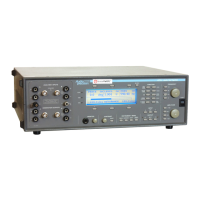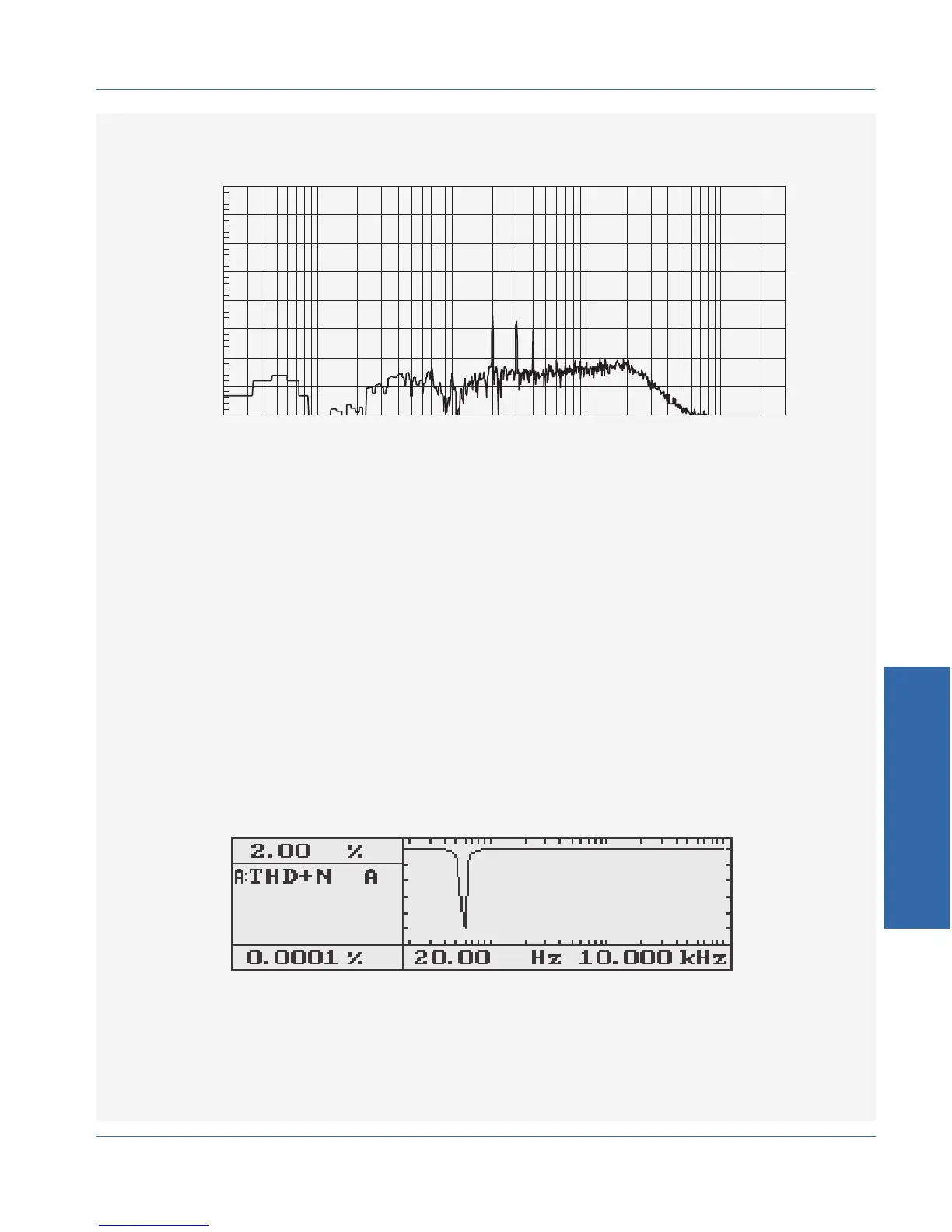This measurement is dominated by the high-frequency noise, although
the distortion products (at 2 kHz, 3 kHz and 4 kHz) are probably
contributing. Next, we can invoke the 22 kHz lowpass filter. The
spectrum then looks like this:
The high-frequency noise has been eliminated, and the measurement
is now dominated by the distortion products. The THD+N now
measures 0.0390 %, which is precisely the theoretical THD for these
distortion products. The contribution of the remaining noise (between
400 Hz and 22 kHz) is negligible.
Changes with Frequency
Sometimes THD+N will be very consistent over a range of frequencies
except that it will drop out at one frequency, giving a very low reading.
This is an indication that the THD+N reading is dominated by
significant hum or interference at that frequency. This is common when
using a fundamental at 50 or 60 Hz in the presence of significant hum.
For example, you may see a THD+N sweep that looks like this:
Figure 4-16. THD + N with interfering signal at same frequency as fundamental
-140
+20
-120
-100
-80
-60
-40
-20
+0
d
B
r
A
20 50 100 200 500 1k 2k 5k 10k 20k 50k
Hz
100k 200k 300k
Figure 4-17. Same device with 22 kHz lowpass filter added
FUNCTION Descriptions Understanding THD + N
4 Functions
ATS-1 Access User's Manual 4-17

